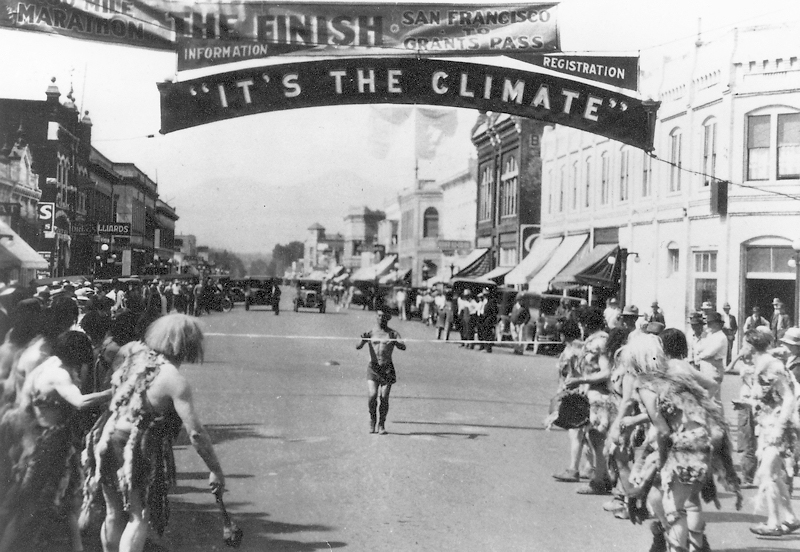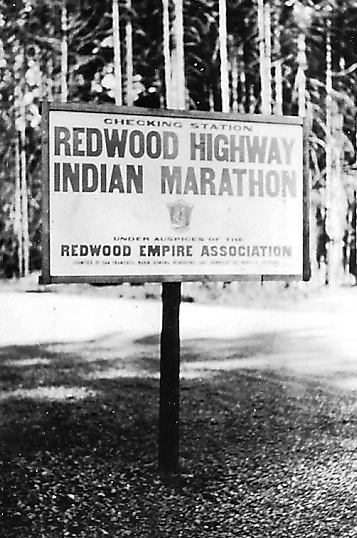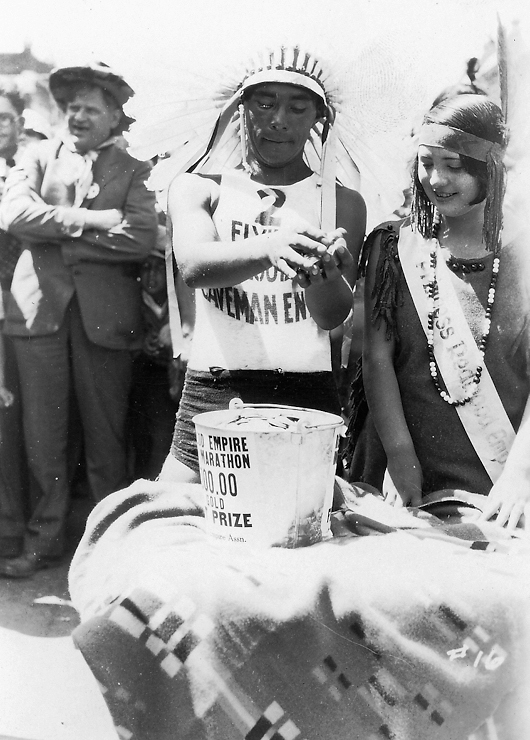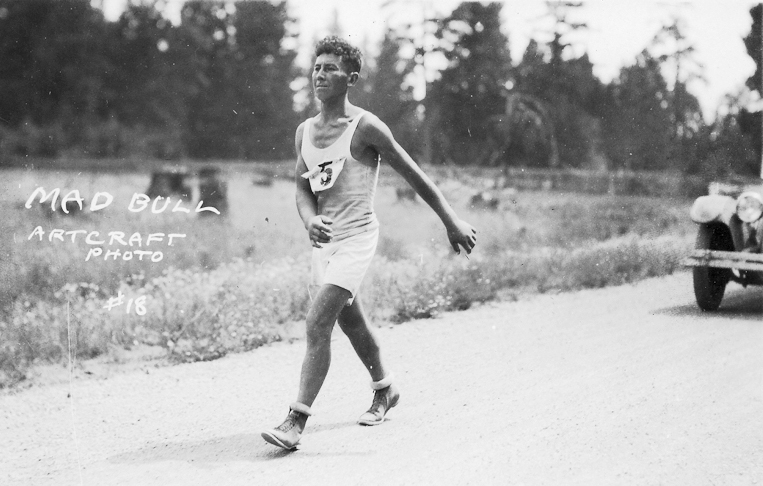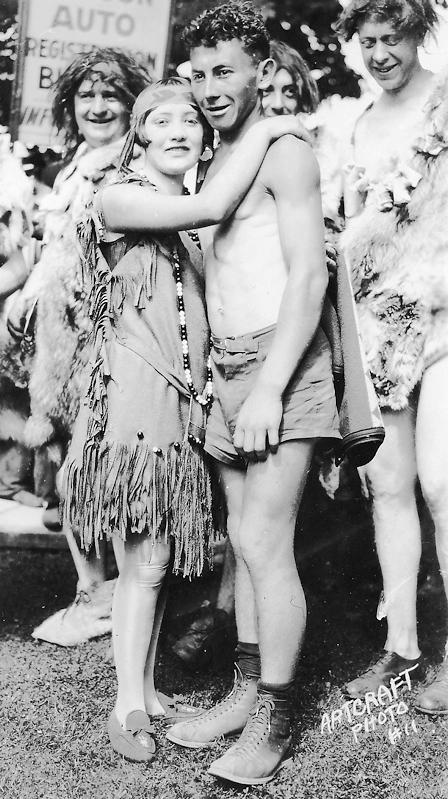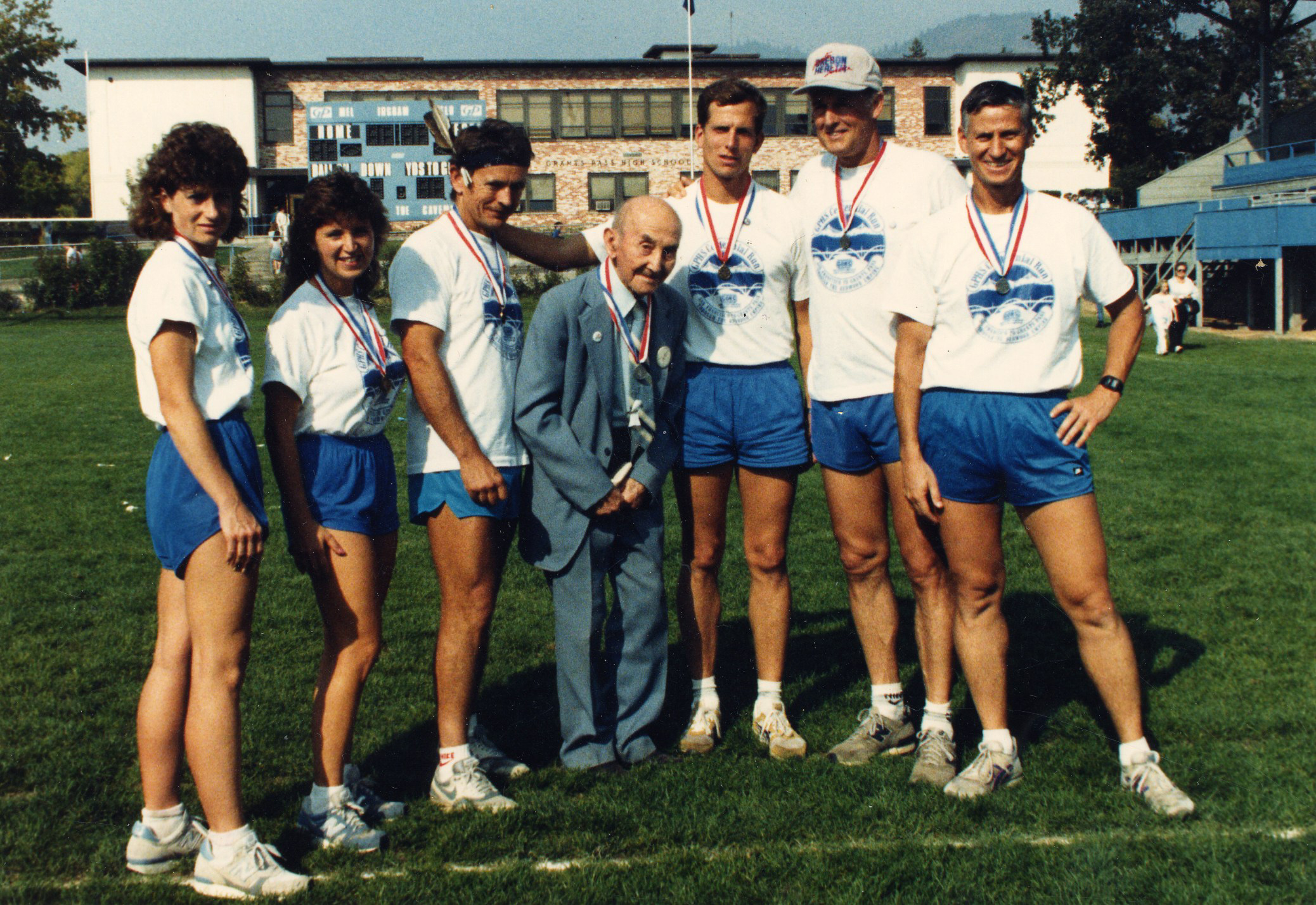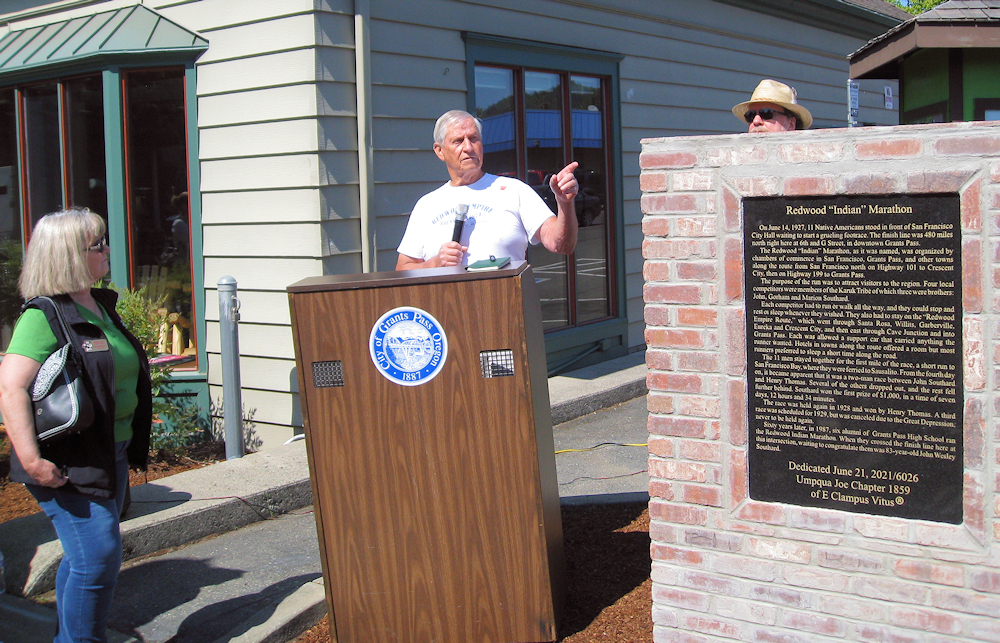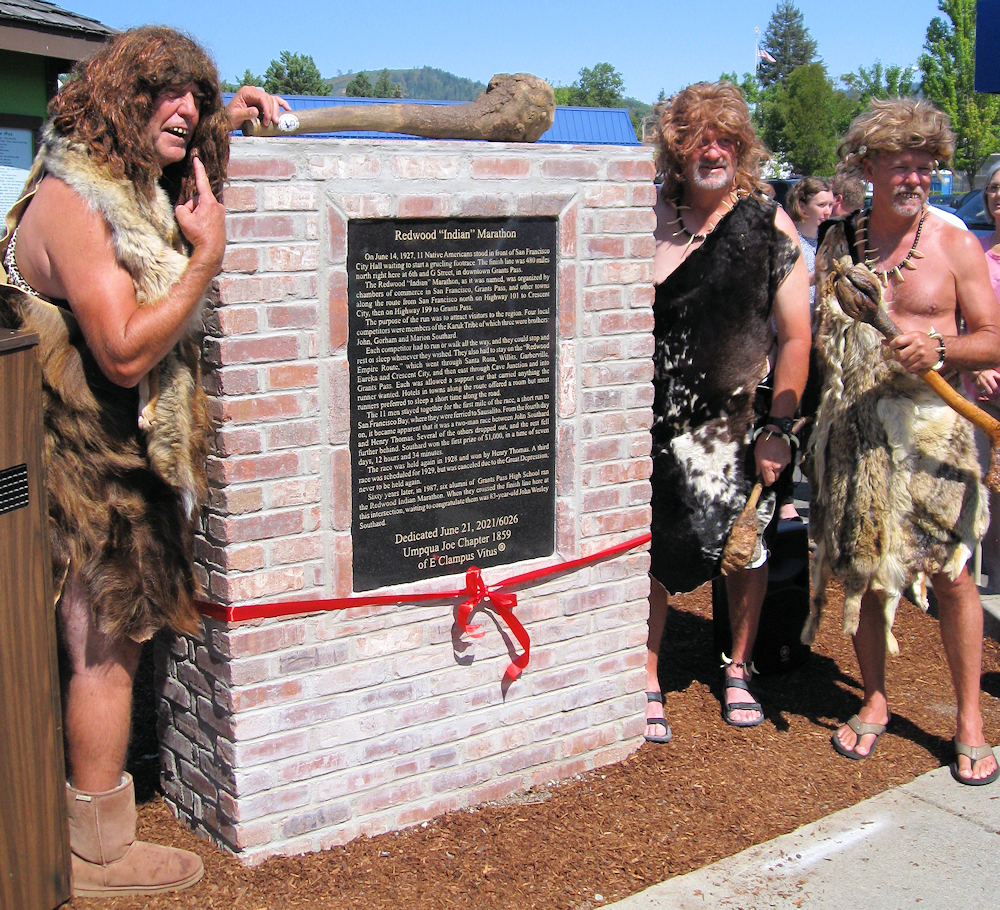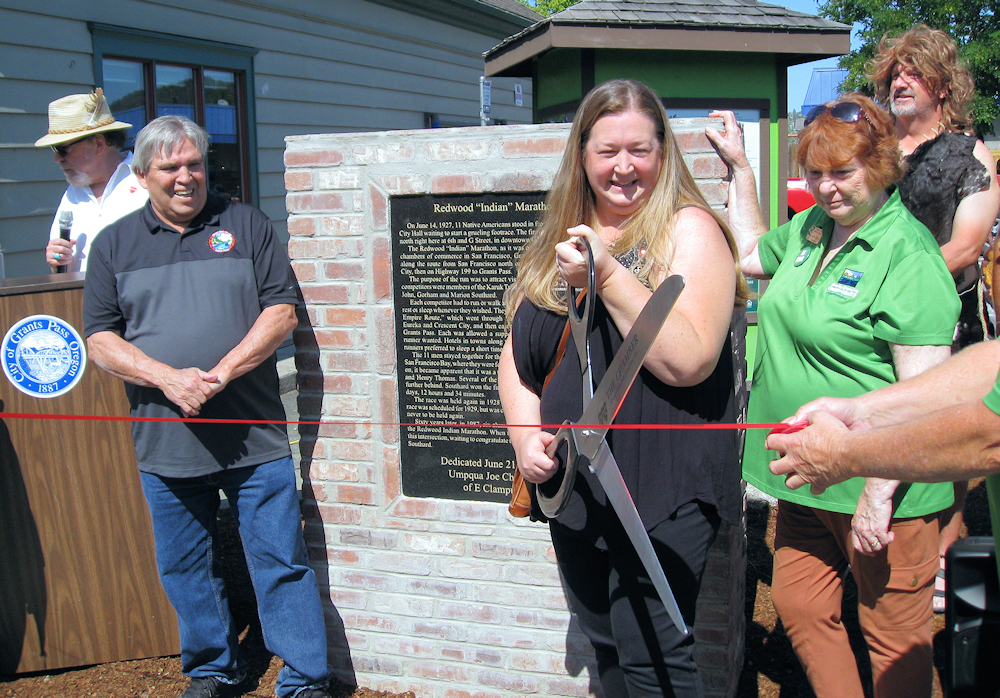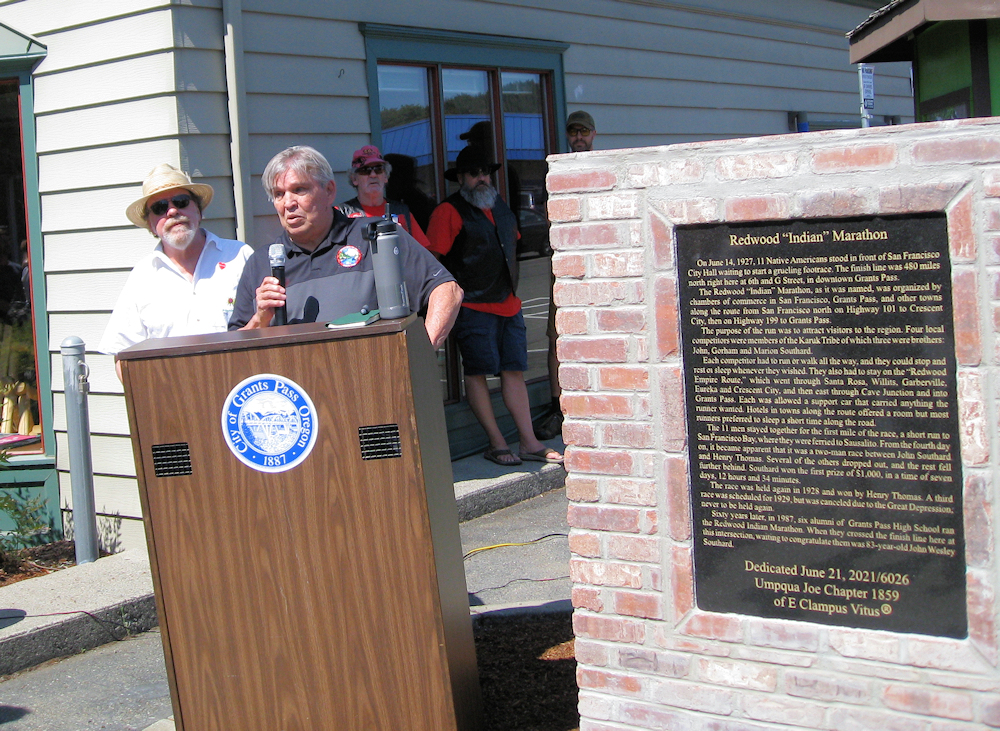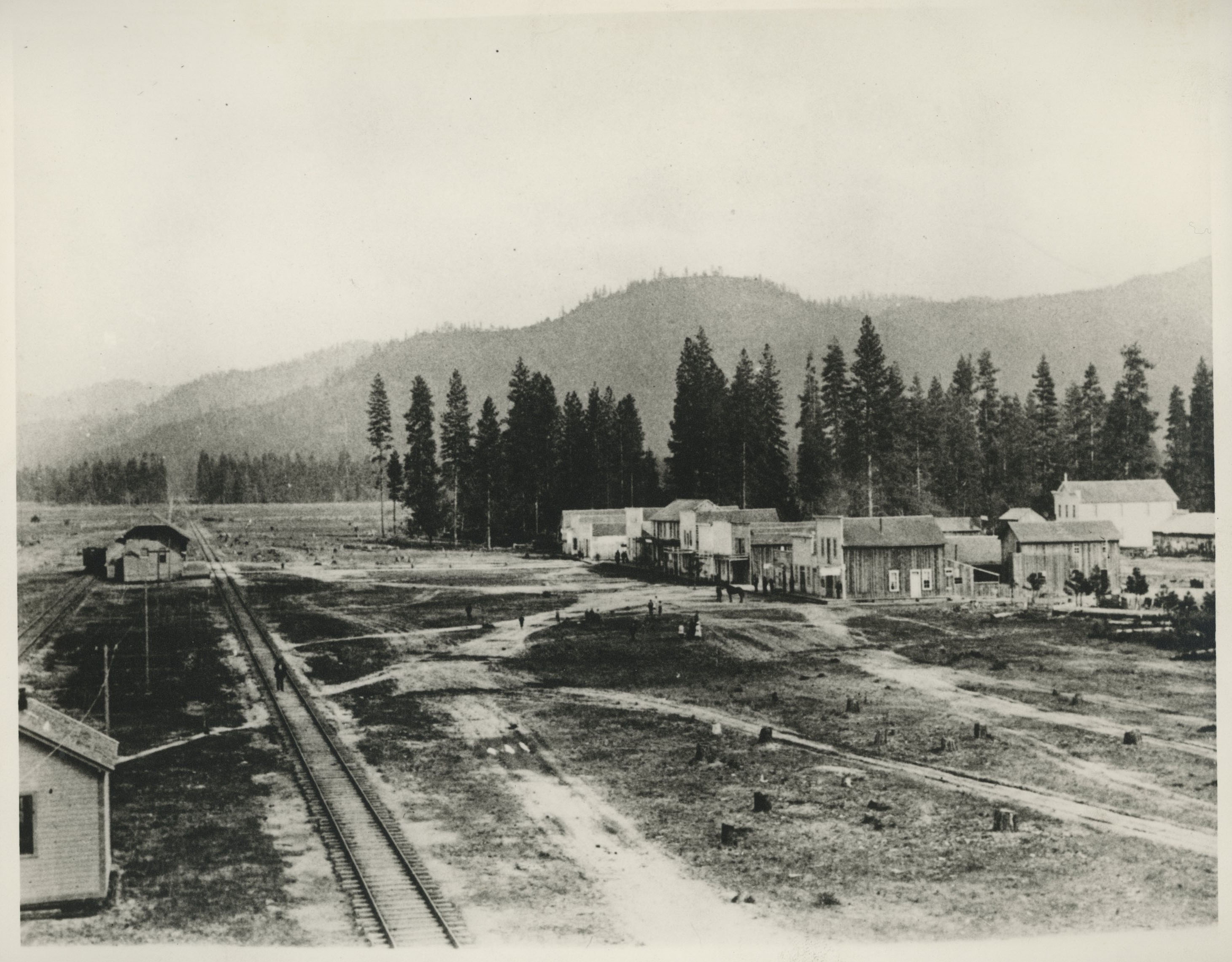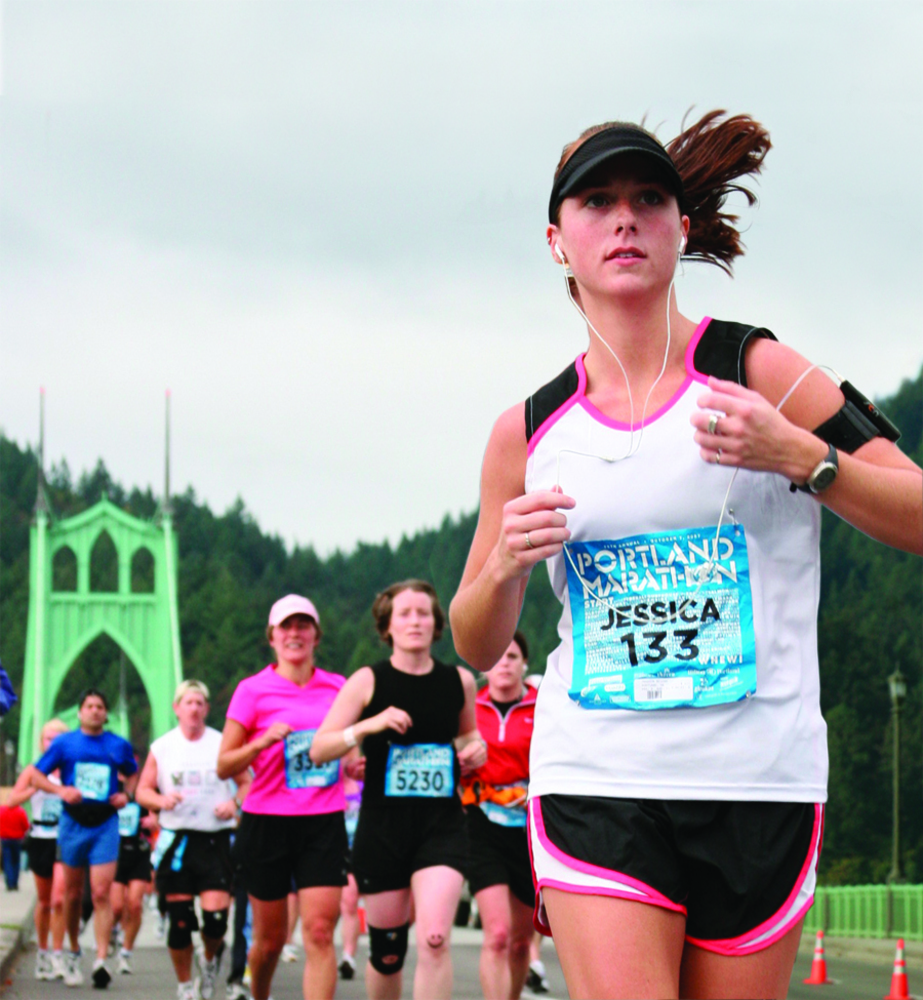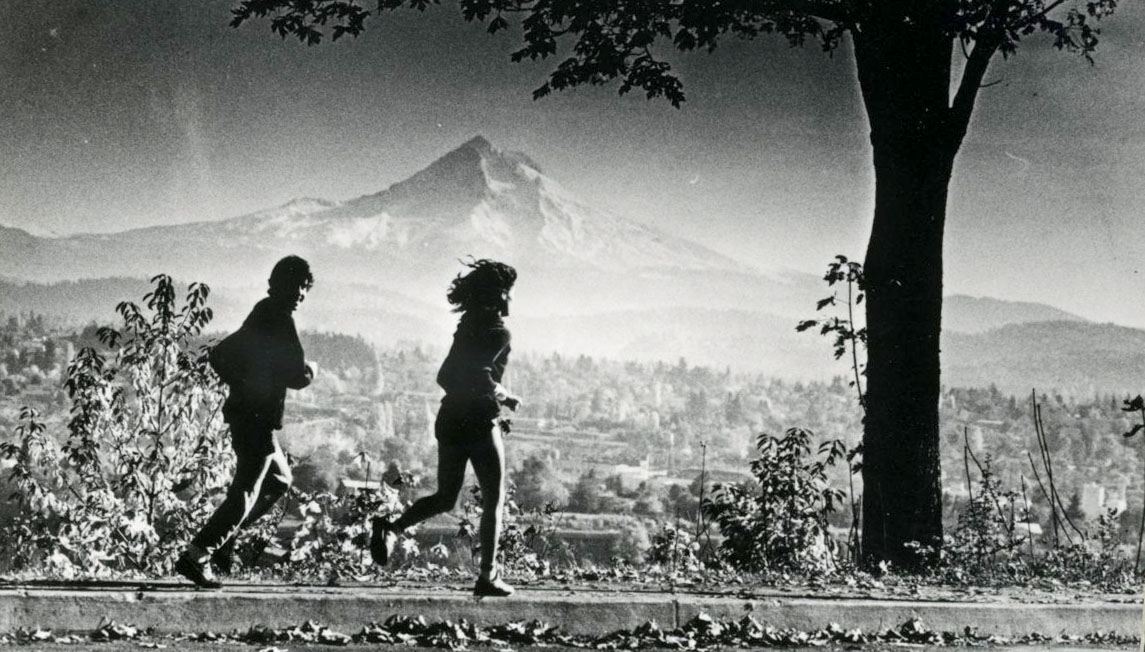On June 14, 1927, eleven Native Americans stood in front of San Francisco's City Hall waiting for the starter's gun that would begin a grueling footrace. The finish line was 480 miles north in Grants Pass, Oregon.
The Indian Redwood Marathon was conceived and organized by Chambers of Commerce in San Francisco, Grants Pass, and other towns along the route. Their newly designated "Redwood Empire" stretched from San Francisco north on Highway 101 to Crescent City, then east on Highway 199 to Grants Pass. The purpose of the run was to attract visitors to the Redwood Highway, which had been built through the area, which was rich in natural beauty, with mountains, rivers, and redwood trees.
The organizers of the footrace believed they could gain more media coverage if entrants were limited to Native Americans. Four of the competitors were members of the Karuk Tribe on the upper Klamath River. Three were brothers—John, Gorham, and Marion Southard. Believing the names too ordinary, race organizers gave them "real Indian names." John was called Mad Bull, Gorham became Rushing Water, and Marion was Fighting Stag. Another Karuk, Henry Thomas, was dubbed Flying Cloud.
The rules were simple: Each competitor had to run or walk all the way, and they could stop and rest or sleep whenever they wished. They also had to stay on the course, which went through Santa Rosa, Willits, Garberville, Eureka, and Crescent City, California, and then east over the coastal mountains through Cave Junction and into Grants Pass. Each was allowed a support car that carried food, drink, clothes, extra shoes, and anything else the runner wanted. Hotels in towns along the route offered a room and bed to the eleven men, but few of them accepted, preferring to sleep a short time along the road.
The eleven men stayed together for the first mile of the race, a short run to San Francisco Bay, where they were ferried to Sausalito. From the fourth day on, it became apparent that it was a two-man race between John Southard (Mad Bull) and Henry Thomas (Flying Cloud). Several of the others dropped out, and the rest fell farther behind. Southard was in the lead and determined to stay there. He later remembered: "I was resting when back down the road I saw Cloud come into view. I changed my shoes and took off. He never caught me."
Southard won in a time of seven days, twelve hours, and thirty-four minutes and claimed the first prize of $1,000. Thomas, eight hours back, took second and won $500.
The race was so successful in attracting attention that it was held again in 1928. This time Henry Thomas won. A third race was being planned for 1929, but with the stock market crash and onset of the Great Depression, it was cancelled and never run again.
Sixty years later, in 1987, six alumni of Grants Pass High School ran the Redwood Empire Indian Marathon. When they crossed the finish line in Grants Pass, waiting to congratulate them was eighty-three-year-old John Wesley Southard. On July 21, 2021, the Umpqua Joe Chapter of the E. Clampus Vitus historical marker project dedicated a historical marker at 6th and G streets near the site of the race's finish line.
-
![Reenactment of Mad Bull completing Indian Redwood Marathon, 1927.]()
Indian Redwood Marathon, Mad Bull Finish, 1927.
Reenactment of Mad Bull completing Indian Redwood Marathon, 1927. Courtesy Rene Casteran
-
![Indian Redwood Marathon check point sign, 1927 or 1928.]()
Indian Redwood Marathon, check point sign.
Indian Redwood Marathon check point sign, 1927 or 1928. Courtesy Rene Casteran
-
![Flying Cloud with his winnings, Indian Redwood Marathon, 1928.]()
Indian Redwood Marathon, Flying Cloud and his prize, 1928.
Flying Cloud with his winnings, Indian Redwood Marathon, 1928. Courtesy Rene Casteran
-
![Flying Cloud (middle) during Indian Redwood Marathon, 1928.]()
Indian Redwood Marathon, Flying Cloud on road with aid, 1928.
Flying Cloud (middle) during Indian Redwood Marathon, 1928. Courtesy Rene Casteran
-
![Mad Bull during 1927 Indian Redwood Marathon.]()
Indian Redwood Marathon, Mad Bull on road, 1927.
Mad Bull during 1927 Indian Redwood Marathon. Courtesy Rene Casteran
-
![Indian Redwood Marathon 1927 winner Mad Bull with Little Fawn of Hoopa Lower Klamaths.]()
Indian Redwood Marathon, Mad Bull with Little Fawn, 1927.
Indian Redwood Marathon 1927 winner Mad Bull with Little Fawn of Hoopa Lower Klamaths. Courtesy Rene Casteran
-
![Flying Cloud (l) during Indian Redwood Marathon, 1928.]()
Indian Redwood Marathon, Flying Cloud on road, 1928.
Flying Cloud (l) during Indian Redwood Marathon, 1928. Courtesy Rene Casteran
-
![Wayne Morrow (r) and Grants Pass High School runners pose with John Southland (Mad Bull) after 1987 Redwood Empire Indian Marathon, 1987.]()
Indian Redwood Marathon, group photo, 1987.
Wayne Morrow (r) and Grants Pass High School runners pose with John Southland (Mad Bull) after 1987 Redwood Empire Indian Marathon, 1987. Courtesy Wayne Morrow
-
![]()
Wayne Morrow speaks at the Indian Marathon Monument dedication, 2021.
Courtesy Rene Casteran
-
![]()
Grants Pass Cavemen at the Redwood Hwy Indian Marathon monument dedication, 2021.
Courtesy Rene Casteran
-
![]()
Grants Pass Mayor Sara Bristol cutting ribbon at Indian Monument dedication, 2021.
Courtesy Rene Casteran
-
![]()
Chairman of the Karuk Tribe, Russell "Buster" Attebery, speaks at the Marathon Monument dedication, 2021.
Courtesy Rene Casteran
Related Entries
-
![Grants Pass]()
Grants Pass
Located on the Rogue River about thirty miles northwest of Medford, Gra…
-
![Portland Marathon]()
Portland Marathon
In November 1972, the first Portland Marathon attracted 86 marathoners …
-
![Running Ultras]()
Running Ultras
The State of Oregon is celebrated for its running competitions, includi…
Related Historical Records
Map This on the Oregon History WayFinder
The Oregon History Wayfinder is an interactive map that identifies significant places, people, and events in Oregon history.
Further Reading
Barnard, Jeff. "Relay Runners Re-create SF-Grants Pass Footrace." Oregonian, Oct. 14, 1987, p. B-4 2M.
Sanders, Garth. "Mad Bull's Run For Glory." San Francisco Sunday Examiner & Chronicle, April 8, 1984, pp. 26-29.

